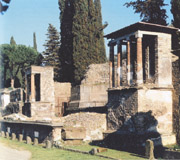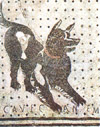
NEW DISCOVERIES IN XX CENTURY
The activity of Giuseppe Fiorelli is continued by his collaborators, Michele Ruggiero and Giulio de Petra, consolidating most of the buildings. During the period between 1906 and 1910 some very nice homes were found, including the House of the Vettii. Since the beginning of the twentieth century sophisticated techniques are increasingly using that allow to bring to light the houses in their entirety, up to the ceiling. It is a rare occasion in archaeological documentation, because normally only the basis of the monuments has survived so far, without their upper parts. Until 1923 Vittorio Spinazzola proceeds to liberate the town centre and the district of shops in Pompeii.
Since 1924, for almost 40 years, Pompeii is linked to the name of Amedeo Maiuri, who looked after the whole of the town and he fought for the conservation and protection of town with new special laws. During this long period, there are also some interruptions of work: the Second World War bore disastrous consequences on Pompeii, in part affected by the bombing. After the war, however, they started to dig back: from 1951 it will discover the walls in the necropolis Street Nocera. Later, some discoveries extra urban complete the picture the establishment of the area. To the north of Pompeii, Boscoreale, they bring to light two houses, accidentally discovered between 1897 and 1900 and later excavated. Today of these homes we have only a few ruins but many items, including vases and silver artefacts kept in the Louvre , and paintings scattered among various museums, from Naples to the Metropolitan in New York, to the museums of Brussels, Paris and Amsterdam. In 1964 the archaeologists bring to light the villa called Poppea to Oplontis, in the modern times called Torre Annunziata, a richly decorated building.






